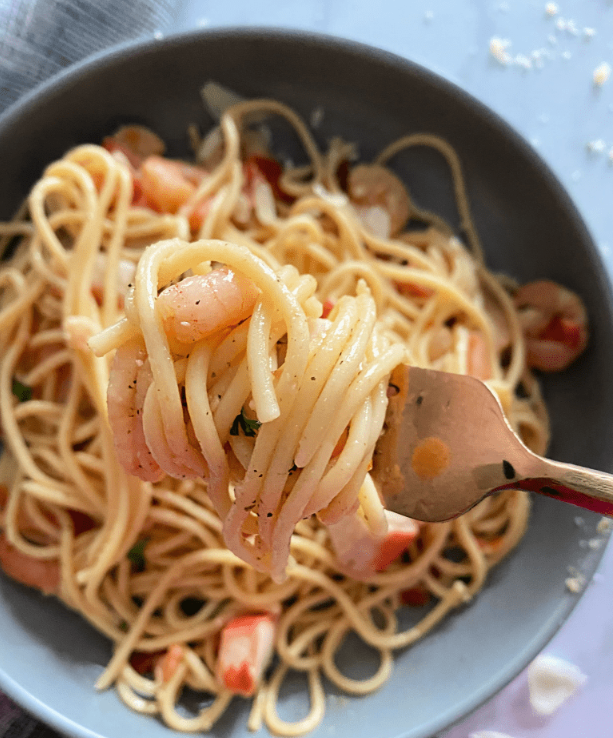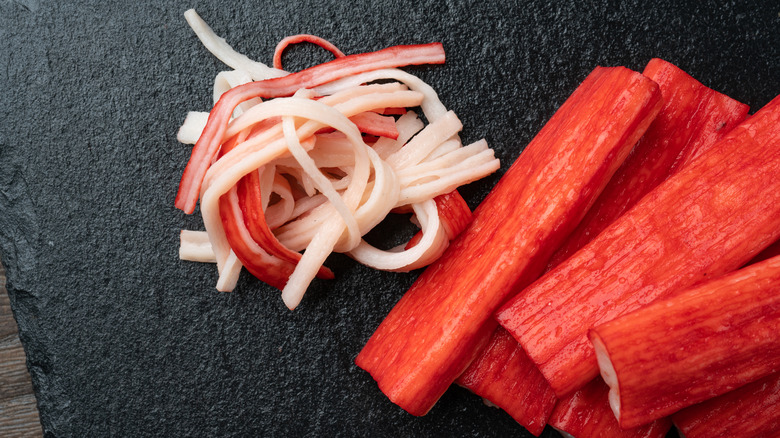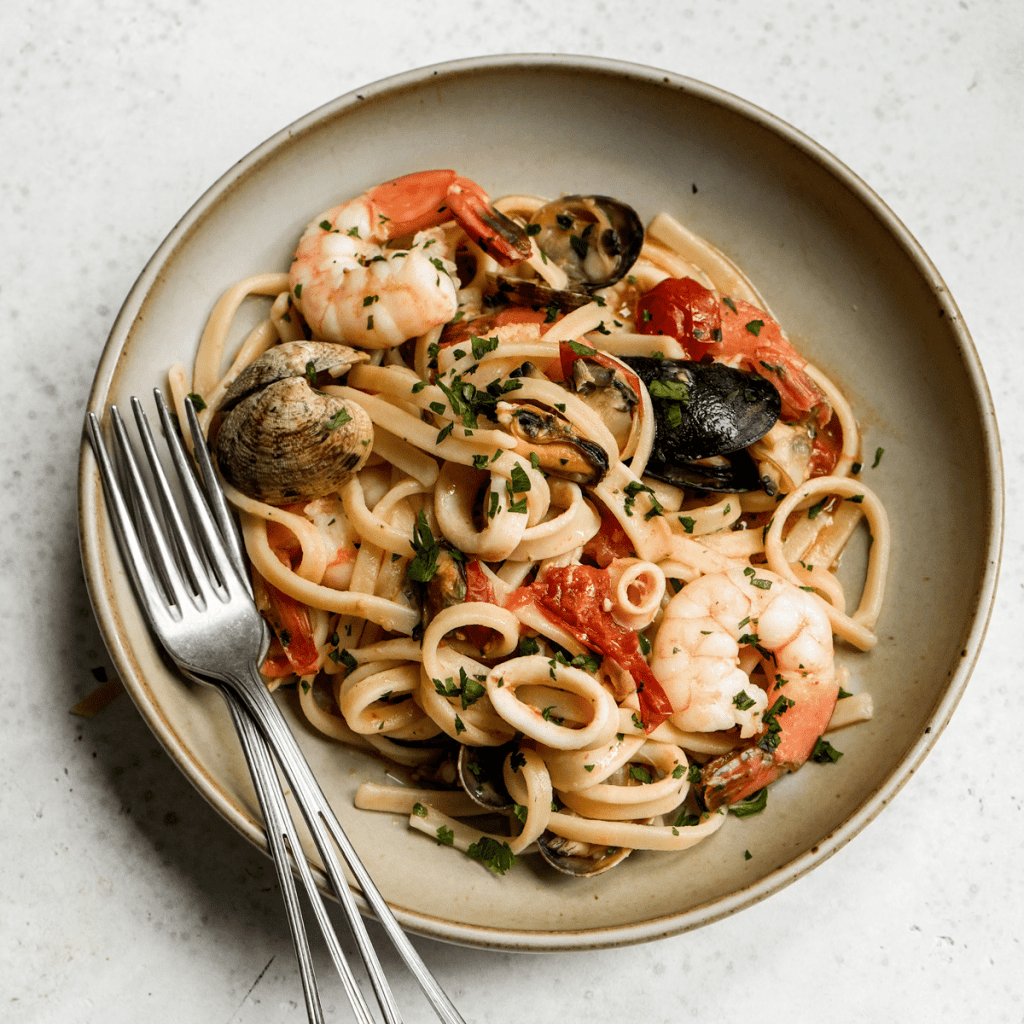When I brought crab stick pasta to a work event, I didn’t expect it to spark so much curiosity—and maybe even a little controversy. One coworker looked at the dish and turned up her nose, mentioning she was “iffy” about crab sticks. She’d heard some things about how they’re made and wasn’t thrilled about the idea. If you’ve ever wondered what’s really in crab sticks and why some folks might be hesitant to eat them, let’s dive into the fascinating story behind this popular, yet often misunderstood, seafood ingredient.
The Work Event: A Crab Stick Pasta Dish Met with Doubt

Work potlucks and events are a fun way to share a bit of ourselves through food. Crab stick pasta, with its creamy texture and savory flavor, seemed like a crowd-pleaser to me. But my coworker wasn’t having it. Her hesitancy highlighted a common reaction to crab sticks, a food people either love or avoid due to its artificiality and the mystery around its ingredients. So, what exactly are crab sticks made of, and are they something we should be cautious about?
Coworker’s Concerns: What’s Wrong with Crab Sticks?
My coworker’s reluctance wasn’t unique. Many people hesitate to eat imitation crab due to misconceptions about its ingredients and concerns over its processing. While crab sticks might look and taste like crab meat, they’re actually made from a processed fish paste called surimi. People often worry that the “imitation” aspect means unhealthy additives or mystery ingredients, leading them to skip dishes that feature crab sticks. But are these concerns justified?
What Are Crab Sticks Made Of, Anyway?
Crab sticks, also known as imitation crab or surimi, are designed to mimic the texture and flavor of real crab meat. However, they’re typically made from white fish like pollock or hake, not crab. This fish is minced into a paste, mixed with other ingredients, and then shaped and flavored to resemble crab.
Here’s a closer look at the main ingredients:
- Surimi (Fish Paste): The base of crab sticks, typically made from white fish such as Alaskan pollock, which is minced and formed into a paste.
- Starch: Added to improve texture and help bind the ingredients.
- Flavorings: These often include crab-like flavor extracts or seasonings to give it that characteristic taste.
- Food Coloring: That distinctive red or pink color on the outside of crab sticks? It’s usually from food dye to make them visually similar to real crab meat.
- Additional Additives: Some brands add egg whites, sugar, salt, and preservatives to enhance flavor and increase shelf life.
The Production Process: How Crab Sticks Are Made
The process of making crab sticks is quite elaborate. Here’s a quick breakdown:
- Deboning and Mincing: The white fish is deboned, minced, and transformed into a paste, ensuring a smooth texture.
- Mixing with Other Ingredients: This paste is combined with starch, flavorings, and additives, which bind the ingredients and mimic the flavor of crab.
- Shaping and Cooking: The mixture is shaped into stick-like forms, and then it’s cooked to retain the structure.
- Cooling and Packaging: Once the crab sticks are formed, they are cooled, cut, and packaged for sale.
This process results in a product that looks and tastes remarkably like crab meat—without the actual crab. However, the artificial flavoring and use of additives make some consumers wary.
Dispelling Common Misconceptions About Crab Sticks

There’s a fair share of myths around crab sticks. Here are some common ones:
- “Crab Sticks Use Low-Quality Ingredients”: This isn’t entirely true. While crab sticks are a processed product, they’re typically made from high-quality white fish, which is safe and nutritious.
- “Imitation Crab is Unhealthy”: Crab sticks do contain additives and flavorings, but they can still fit into a balanced diet. Many brands are increasingly transparent about ingredients and production methods.
- “It’s Fake Food”: While it’s true that crab sticks aren’t real crab, calling them “fake” doesn’t do justice to the careful production process. Surimi is a traditional food in Japan and has been used for centuries.
Nutritional Value: Are Crab Sticks Good for You?
When considering crab sticks as part of a meal, it’s essential to look at the nutritional profile. Here’s what you’ll generally find:
- Low in Calories and Fat: Crab sticks are usually low in both calories and fat, making them suitable for lighter meals.
- Good Protein Source: As a fish-based product, crab sticks provide a fair amount of protein.
- High in Sodium: Due to added salt and flavorings, crab sticks can be high in sodium. This is something to watch if you’re trying to reduce your salt intake.
While they may not be a “superfood,” crab sticks can be a convenient, low-calorie addition to a meal when eaten in moderation. However, for those trying to avoid food additives or preservatives, opting for whole, unprocessed seafood might be a better choice.
Alternative Seafood Options for Pasta

If you or your coworkers aren’t keen on crab sticks, plenty of other seafood choices offer similar flavor without the processing. Here are a few ideas:
- Real Crab Meat: Nothing beats the taste and texture of real crab, though it’s more expensive and less shelf-stable.
- Shrimp: Versatile and flavorful, shrimp is an excellent alternative for pasta dishes.
- Scallops: These bring a delicate, slightly sweet taste to dishes and work well with creamy pasta sauces.
- Plant-Based Seafood Alternatives: New options are emerging for people looking for a sustainable seafood replacement, with plant-based “seafood” that mimics texture and flavor.
These options let you enjoy seafood’s unique taste without relying on imitation products.
Conclusion: Respecting Different Tastes and Food Choices
In the end, the crab stick debate at my work event was more than just about food. It highlighted the diverse preferences, tastes, and dietary concerns we all bring to the table. Whether you love imitation crab or steer clear of processed foods, understanding what’s in our food helps us make informed choices.
Next time you’re at a gathering, and someone brings a dish that’s unfamiliar or sparks questions, take it as an opportunity to learn something new. Crab sticks may not be for everyone, but they’re a fascinating example of how food can bring both creativity and a touch of curiosity into our lives. Whatever your choice—crab stick pasta or another delicious seafood option—enjoy the dish that suits your taste and health goals best.


